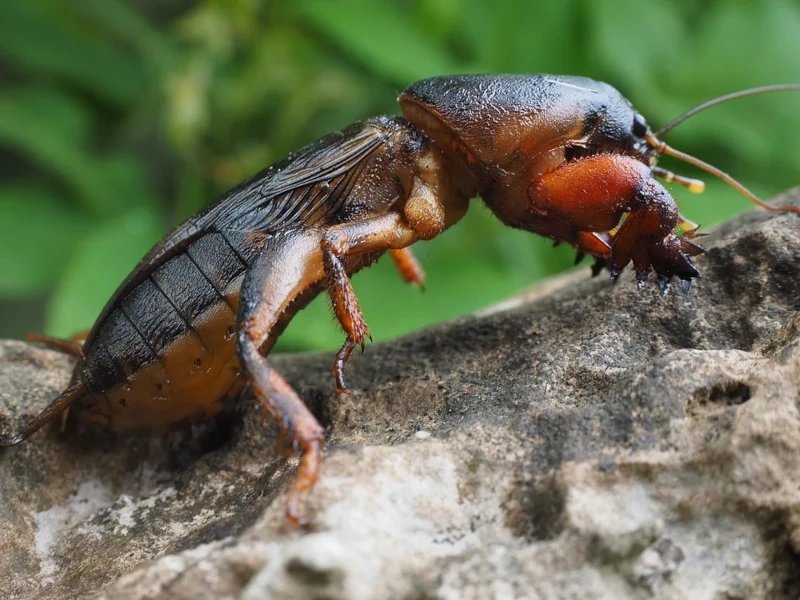Mole Cricket Facts
- Many consider the most noteworthy thing about the Mole Cricket to be what you do not notice: their presence. That occurs because they spend the majority of their lives, and conduct most of their activities, underground.
- Yet these fascinating insects do emerge at certain times of the year, for brief periods. While the activities the male undertakes to attract the female occur underground, mating itself occurs above ground.
- Although both genders remain capable of flight, the female ranks as the more powerful flier of the two genders. Also, among this species, males almost never fly, and females typically fly only to seek a mate.
- Their genus holds three species, and each displays a far greater tendency to roam than most types of crickets. Due to this, some adults may move as much as 5 mi (8 km) from their birthplace during mating season.
Related Species
Mole Cricket Physical Characteristics
While the different species of Mole Cricket vary slightly in size and appearance, similarities remain.In addition, unlike many insects, they do not display sexual dimorphism.
Both genders attain a maximum length of between 1.3 in (3.2 cm) and 1.4 in and (3.5 cm). They possess a roughly cylindrical body, which also has a dense covering of tiny hairs. The head, forelimbs, and prothorax possess a tough exoskeleton, while the abdomen remains comparatively soft.
Though colors vary significantly between individuals and species, brown and yellow predominate. The forelegs have a flattened shape, providing a powerful digging ability, while the hind legs resemble those of other crickets.
- Kingdom: Animalia
- Phylum: Arthropod
- Class: Insecta
- Order: Orthoptera
- Family: Gryllotalpidae
- Genus: Gryllotalpa
Mole Cricket Distribution, Habitat, and Ecology
Between them, the three species of Mole Cricket have a wide and varied distribution. They exist endemically in most of North America, and parts of South America, Asia, and Africa as well. Furthermore, they have been introduced into many other regions, and are considered an invasive species.
They prefer vegetation-rich habitats, such as forests, with loose soil and plentiful ground cover. Like many insects, they have three life cycles; eggs, nymphs, and adults.
Being primarily omnivorous, their diet remains broad and includes plant roots, grubs, and worms.
Male mole crickets use an extremely powerful song to attract females, which they generate through stridulation.
Both genders create numerous extensive tunnels, and each commonly serves a specific individual purpose, such as feeding and escape.

